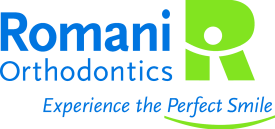What is the advantage of two-phase orthodontic treatment?
Two-phase orthodontic treatment is a very specialized process that includes tooth straightening during a critical stage of a child’s facial and physical development. The major advantage of two-phase treatment is maximizing jaw growth and dental eruption during an ideal time in a growing child’s development (phase I), followed by a full set of braces to detail the position and bite of the adult teeth in a young teenager (phase II). Phase I, also known as “early interceptive treatment,” is limited orthodontic treatment (e.g., expander or partial braces) before all of the permanent teeth have erupted. Such treatment can occur between the ages of seven and ten. This treatment is sometimes recommended to make more space for developing teeth or correcting crossbite, overbite, underbite, or harmful oral habits. Phase II treatment is also called “comprehensive treatment” because it involves full braces when all permanent teeth have erupted, usually between the ages of eleven and thirteen.
What if I put off treatment for my child?
The disadvantage of waiting for complete eruption of permanent teeth and having only one stage of treatment for a child with severe crowding or a jaw discrepancy is the possibility of missing out on growth potential, leading to a compromised result that may not be stable. Treatment at a later age may require a more aggressive treatment plan, including extractions and/or jaw surgery, to accomplish a satisfactory result.
Phase One: the foundation for a lifetime of beautiful teeth
Phase I treatment aims to develop the jaw size to accommodate all of the permanent teeth and relate the upper and lower jaws to each other. Children sometimes exhibit early signs of jaw problems as they grow and develop. An upper or lower jaw that is growing too much or not enough can be recognized at an early age. A screening evaluation is recommended for all children, beginning at the age of 7 years old. We are pleased to offer this examination at no charge; call our office to schedule a FREE new patient appointment.
Planning now can save your child’s smile later
Because they are growing rapidly, children can benefit enormously from an early phase of orthodontic treatment utilizing appliances that direct the growth relationship of the upper and lower jaws. Thus, a good foundation can be established, providing adequate room for eruption of all permanent teeth. This early correction may prevent later removal of permanent teeth to correct overcrowding, and/or surgical procedures to align the upper and lower jaws. Leaving such a condition untreated until all permanent teeth erupt could result in a jaw discrepancy too severe to achieve an ideal result with braces alone.
Taking records to determine the customized treatment plan
Orthodontic records will be necessary to evaluate the complexity of the case. Records at the first visit consist of photos and one 3D radiograph (CBCT). Models of the teeth may also be taken before the start of treatment. Dr. Romani will use these records at the examination & consultation appointment to determine the type of appliances to be used, the estimated duration of treatment time, and the fee for treatment.
Resting Period
After phase I treatment has been completed, the remaining permanent teeth are allowed to erupt. A transitional retainer may be used for the first year following the end of phase I. After that, it is best to discontinue the retainer to allow the permanent teeth some freedom of movement while the final eruption occurs. A successful first phase will have created room for the remaining permanent teeth to find an eruption path. Otherwise, they may become impacted or severely displaced, requiring more aggressive treatment later.
Monitoring the teeth’s progress
At the end of the first phase of treatment, the teeth are not in their final positions. This will be determined and accomplished in the second phase of treatment. Selective removal of certain primary (baby) teeth may enhance eruption of the permanent teeth during the resting phase. Therefore, periodic recall appointments for observation are necessary, usually on a six-eight month basis.
Phase Two: Stay healthy and look attractive
Phase II treatment aims to make sure all the permanent teeth are in their ideal position of alignment for a straight smile and healthy bite. When this equilibrium is established, the straight teeth look attractive, are easier to clean and maintain, and will function together properly when chewing. The second phase is initiated when all permanent teeth have erupted and usually requires braces on all the teeth for an average of 18-20 months.
Retention
Retainers are worn as directed after phase II to stabilize the teeth and hold them in their newly corrected position. The retention phase of treatment is as important as the active phase of tooth movement. Maintaining a straight and beautiful smile with retainers is a long-term commitment since teeth tend to change position over time.


